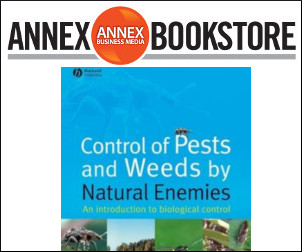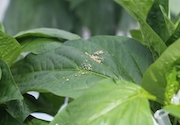| |
| |
 |
 |
| |
 |
|
September 24, 2019 |
|
| |
 Canadian greenhouse growers looking to enter the organic market may be interested to find that, among a list of requirements, substrate volume is mandated as well.
» Read more...
Canadian greenhouse growers looking to enter the organic market may be interested to find that, among a list of requirements, substrate volume is mandated as well.
» Read more...
A Vancouver-based start-up has developed a new type of growing environment for growing hemp and cannabis, different from the greenhouse or warehouse.
» Read more...
Beginning late fall 2019, all plant exporters will be able to request phytosanitary certificates online through My CFIA following the completion of a pilot project.
» Read more...
|
| |
|
| |

This book offers a multifaceted yet integrated discussion on two major applications of biological control: permanent control of invasive insects and plants at the landscape level and temporary suppression of both native and exotic pests in farms, tree plantations, and greenhouses. Written by leading international experts in the field, the text discusses control of invasive species and the role of natural enemies in pest management.
>> Order now |
| |
|
| |
 Generalist predatory mites can sustain their populations by consuming non-pest supplemental foods. This allows predators to be applied even before a pest prey is present on the crop. Having an active and well-fed population of beneficial bugs offers a better, preventative strategy against invading arthropod pests. Here were the foods tested.
» Learn more
Generalist predatory mites can sustain their populations by consuming non-pest supplemental foods. This allows predators to be applied even before a pest prey is present on the crop. Having an active and well-fed population of beneficial bugs offers a better, preventative strategy against invading arthropod pests. Here were the foods tested.
» Learn more |
| |
 Commercially available predatory mites can be categorized as specialist or generalist predators. Specialist predators are used for targeting specific pests in the greenhouse, while generalists are used as a preventative method against a variety of different pests. Find out how different species of mites need different environments in order to work optimally.
» Learn more
Commercially available predatory mites can be categorized as specialist or generalist predators. Specialist predators are used for targeting specific pests in the greenhouse, while generalists are used as a preventative method against a variety of different pests. Find out how different species of mites need different environments in order to work optimally.
» Learn more |
| |
|
| |
 » Read more
» Read more
» Read more
» Read more
» Read more
» Read more
|
| |
|
| |

|
| |
| |








